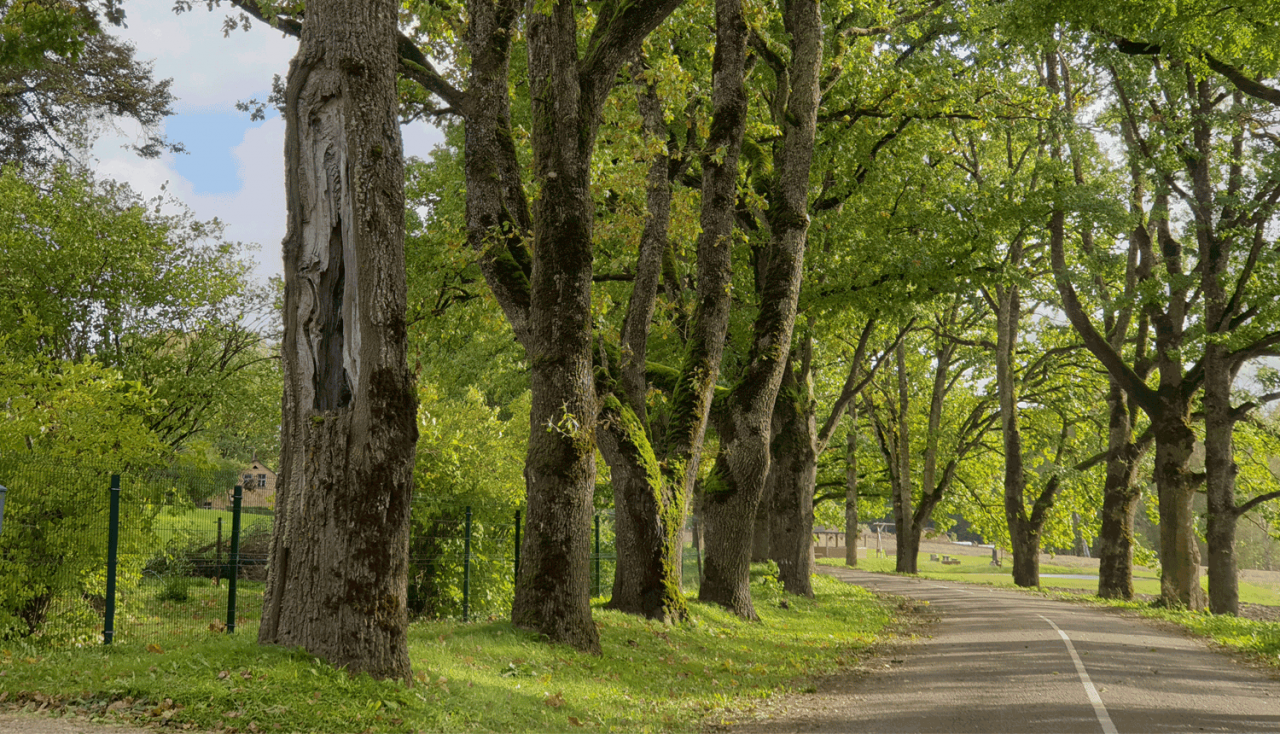Arborists have cleaned up some 3 600 trees in 22 sections of 13 protected alleys over two years on behalf of the Nature Conservation Agency (the Agency). Most of the cleaned alleys are located in Zemgale (Bēne, Blankenfelde, Bukaiši, Lielplatone, Lielauce, Iecava and Elejas alleys), Raiskums and Lubāna-Meirāni alleys in Vidzeme, and Pope, Kalētu, Jaunmokas and Vecmokas alleys in Kurzeme. The work has taken more than 13,000 hours and cost €400,000.
"Protected alleys are unique natural and landscape assets. To preserve them, the management project for habitat and species restoration simultaneously carried out extensive and targeted management work in more than 20% of all protected avenues in Latvia. Unfortunately, the storms of the past years did not spare a number of the alleys already cleaned up during the project. For example, Bukaiši, Vecmokas, Lubānas-Meirāni alleys, where experts subsequently carried out additional works. However, this led to the conclusion that the trees in the cleaned-up sections of the alleys are better able to survive storms - they do not fall over, the tree axles fixed in the systems are held and do not break off, dangerous and dry branches are cut in time, there is no rain of branches during storms, which can endanger people, property and traffic safety," explains project manager Inga Hoņavko.
Before starting the maintenance work, the arborists found that the condition of alleys in Latvia varies greatly. Alleys or sections of alleys are maintained or at least urgent work is carried out to prevent dangerous situations in populated areas and along major roads. However, there are also sections of alleys where no significant maintenance work has been carried out and the condition was very poor in many places. Given that in most cases the trees in the alleys exceed 20 m in height, are relatively old, are located next to national and local roads, and are located in settlements, the maintenance required a high level of professionalism from those carrying out the work.
Most of the avenue trees have had their dry, damaged and dangerous branches removed, and the tree crowns have been raised above the road profile to avoid damage from vehicles and to highlight the tunnel-like effect of the avenues. Sections of the alleys that had not been maintained in recent decades were in many places overgrown with seedlings and shrubs of various species of young trees, which choked the trees of the alleys and degraded their scenic value. Unfortunately, due to unmanagement and natural ageing of the trees, dangerous trees were also found in the alleys. Experts foresaw different solutions for such situations: if the tree did not endanger the safety of people, traffic or property, the tree was left. But if there was a danger, the trees were pruned to a safe height and special tree stabilisation systems were installed. Only in very critical situations were dangerous trees felled. In addition, a total of 50 new tree seedlings of lime, oak and horse chestnut, species typical of these avenues, were planted in the major breaks in the alleys of Lielplatone, Lielauce and Blankenfelde.
The alley maintenance works are one of the activities of the European Union (EU) Cohesion Fund project "Restoration of habitats and species habitats" (full title "Management measures in specially protected nature areas and microreserves to improve the conservation status of habitats and species"; Nr.5.4.3.0/20/I/001) implemented by the Agency. The inventory and management of the alleys is carried out by the Agency together with the project's cooperation partners: VSIA "Latvijas Valsts ceļi", municipalities and owners of private land in whose territories or properties the alleys are located.
The project has also contributed to the conservation of ecosystem services provided by five ecosystems characteristic of Latvia - grasslands, forests, freshwater, marshes and coastal areas - by creating suitable conditions for the existence and development of various species, including a number of protected species. For example, the woodlark, the foxtail beetle, the woodcock, the Siberian tonguewort and salmonids.
A total of 1 786 hectares of habitats and species of EU importance were restored in 30 NATURA 2000 sites, one micro-reserve and 13 protected avenues over the last few years. This included restoring large areas of grassland, heathland and grey dunes, cleaning up river rapids in the Venta (3 km) and Gauja National Park, clearing large reed stands in Lake Rāzna (~35 ha), cleaning up some 3 600 avenue trees, and naturalising several hundred hectares of ash forest and wooded coastal dune habitats.
